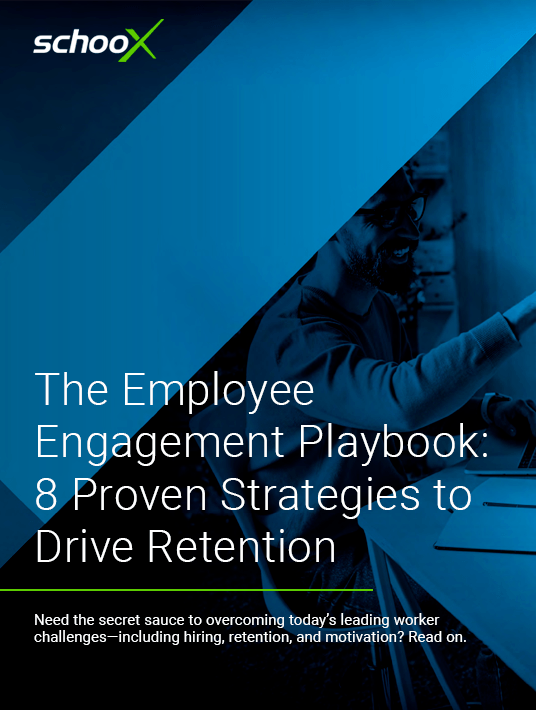Tips To Measure Learning ROI And Real-World Impact
While the numbers will be different for every organization, it’s clear from numerous reports that learning programs deliver a significant return on the investment that companies make in educating their workers. Getting a good ROI for any investment is critical in business. This is particularly important for learning initiatives and tools because their value may not be clearly understood by the C-suite. HR and L&D teams need to make a strong business case in order to justify the value and critical importance of having the right learning technology platforms in place.

eBook Release
The Employee Engagement Playbook: 8 Proven Strategies To Drive Retention
Learn about proven employee engagement strategies and the technology needed to hire the best workers, retain them, and motivate them to perform at their highest capacity while loving their jobs.
Make A Strong Business Case For Investing In Employee Development
In 2017, LinkedIn’s first annual Workplace Learning Report found that Chief Learning Officers (CLOs) were facing increasing pressure to deliver learning programs that both engaged employees and positively impacted their organization’s bottom line. Business leaders expect to see proof that the investment in learning is paying off—both in increased workforce performance and financial return.
Showcasing the impact of ongoing employee learning and development is sometimes the sticking point because there isn’t always a clear way to present results. L&D teams should have access to the tools they need to track learning analytics and measure outcomes. Yet, many LMSs only collect a limited amount of learning data and come up short on business impact insights.
What’s more, companies have traditionally measured the effectiveness of L&D programs through metrics like course competitions, class attendance, pre- and post-surveys or assessments, engagement surveys, and direct feedback. But none of these speak to an actual business ROI.
What you need is an easy-to-use, flexible, and impactful measurement system. What many LMS providers haven’t figured out yet is that there are proven ways that L&D teams can use business key performance indicators (KPIs) combined with LMS data to obtain deep, measurable insights. Schoox recognized this demand and added tools to make this not only possible, but easy. The platform’s Business Impact module provides the tools to correlate KPIs with training metrics without requiring a separate business intelligence application.
How To Calculate The ROI Of Learning
To gain valuable ROI insights, learning systems have to break out of the limited approaches of the past. What’s been missing is finding the right relationship between training data and business data. As Schoox explored the challenge of finding a way to measure learning success consistently and effectively, it found the answer within its own learning system. The key was a combination of LMS training data, an organization’s own KPIs, and the science of correlation.
To measure ROI within the Schoox LMS, all companies have to do is correlate their preferred KPIs against any online training variables they want to measure. This allows the extraction of any relationship that exists between the datasets. Here’s how it works:
Determine Your Training Goals
L&D leaders should work with senior leaders to identify the organization’s desired learning outcome. For example, sales training should improve sales performance.
Decide What KPIs To Use
For example, KPIs to use for measuring learning success might be total sales, customer satisfaction, or product expertise. Note that KPIs for tracking employee training effectiveness should be:
- Measurable and quantifiable
- Competency-based
- Linked to proficiency
- Mapped to organizational and employee goals
Choose Your LMS Criteria
Schoox pulls in data about training performance at the employee or academy level, for example, training completions, exam success data, average training hours per employee, or total training hours.
Correlate LMS Data With Business Data
Select a correlation method to measure the relationship and dependency between training and business performance. Example correlations include:
- Correlate revenue with training data at the employee level
- Correlate sales performance with exam scores
- Correlate sales performance with average training hours on sales coursework
The correlation of data subsets is literally limitless. Learning teams can be creative with how they can look at the training data and performance from different angles—while discovering exactly what impact training has on the business’s bottom line.
Conclusion
Download the eBook The Employee Engagement Playbook: 8 Proven Strategies To Drive Retention to discover how to leverage technology to hire, retain, and inspire top talent. It features insider tips to make your existing employee development program more collaborative, learner-centered, and results-driven.
References
Accenture study statistics [featured in article summary]

